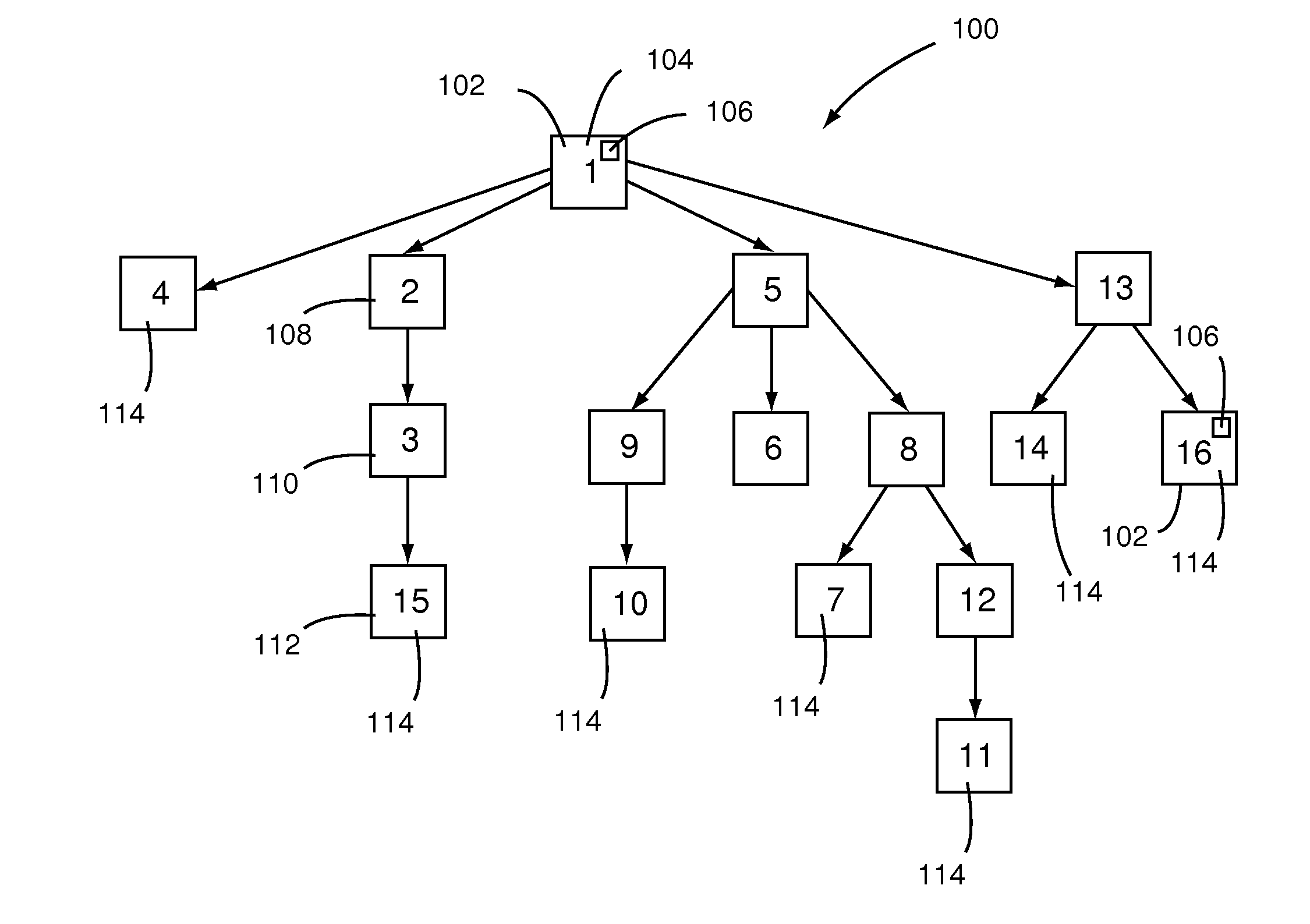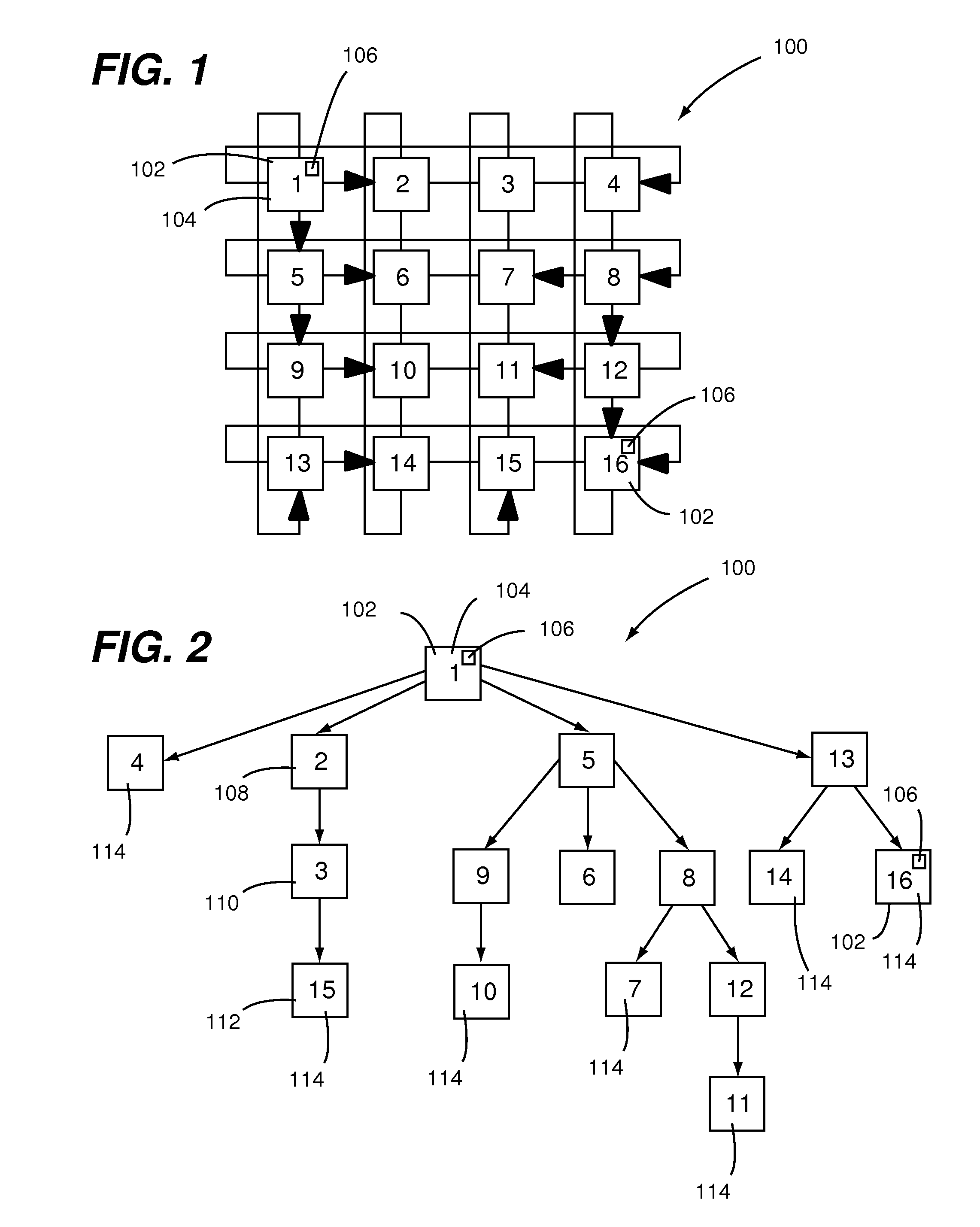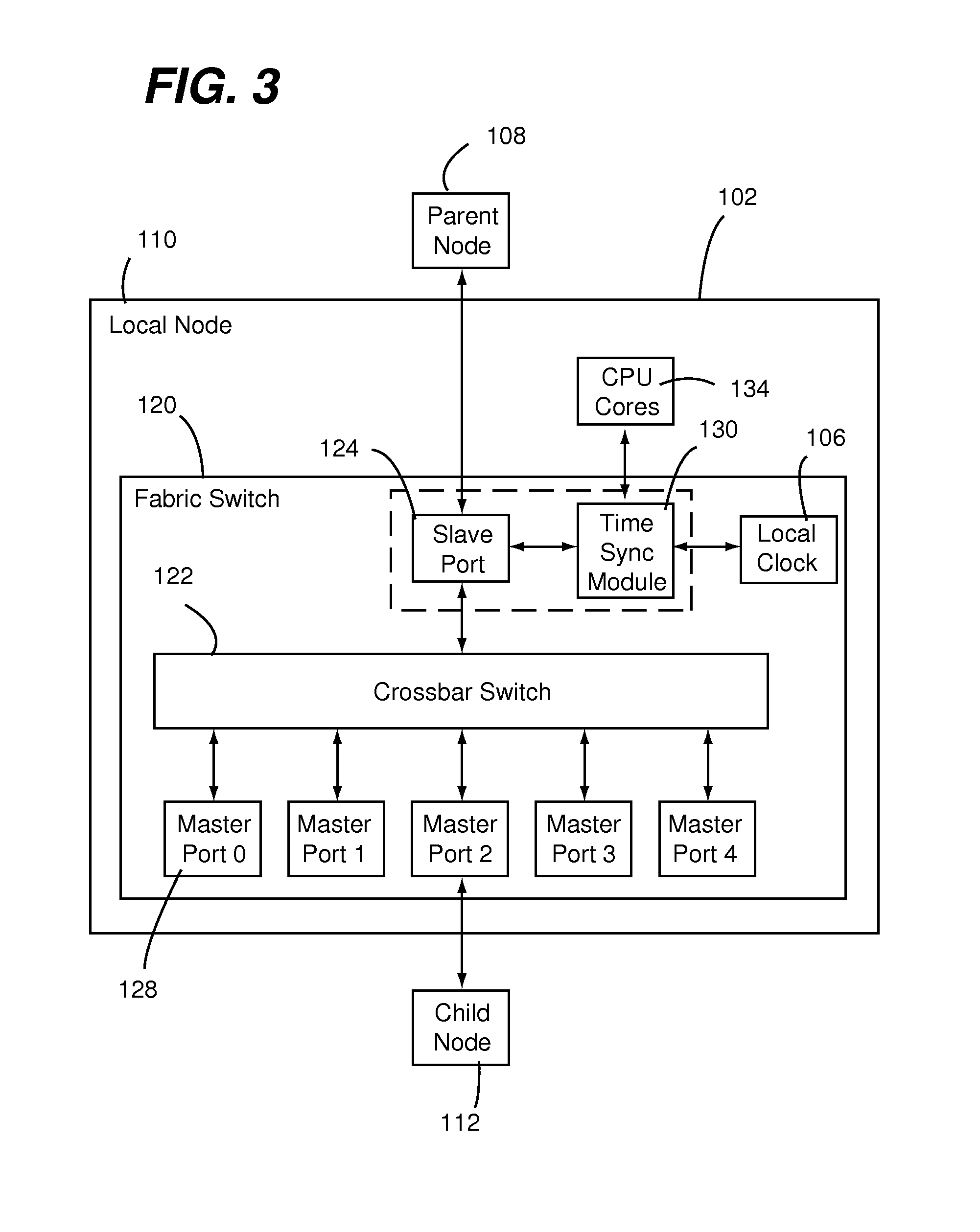Time synchronization between nodes of a switched interconnect fabric
- Summary
- Abstract
- Description
- Claims
- Application Information
AI Technical Summary
Benefits of technology
Problems solved by technology
Method used
Image
Examples
Embodiment Construction
[0023]Embodiments of the present invention are directed to implementation of a time synchronization (sync) protocol entirely or predominately in hardware (HW) of each one of a plurality of data processing nodes in a network. Server on a chip (SoC) nodes that are interconnected within a fabric via a respective fabric switch are examples of a data processing node in the context of the present invention. However, the present invention is not unnecessarily limited to any particular type, configuration, or application of data processing node.
[0024]Advantageously, with a HW implementation of time synchronization, a relatively high rate of time sync packet exchanges can be maintained between data processing nodes. This enables an entire cluster of processing nodes to converge to a common time much faster than in a purely software (SW) implementation of time synchronization. Furthermore, a HW implementation of time synchronization provides a mechanism for synchronizing a local clock of each...
PUM
 Login to View More
Login to View More Abstract
Description
Claims
Application Information
 Login to View More
Login to View More - R&D
- Intellectual Property
- Life Sciences
- Materials
- Tech Scout
- Unparalleled Data Quality
- Higher Quality Content
- 60% Fewer Hallucinations
Browse by: Latest US Patents, China's latest patents, Technical Efficacy Thesaurus, Application Domain, Technology Topic, Popular Technical Reports.
© 2025 PatSnap. All rights reserved.Legal|Privacy policy|Modern Slavery Act Transparency Statement|Sitemap|About US| Contact US: help@patsnap.com



